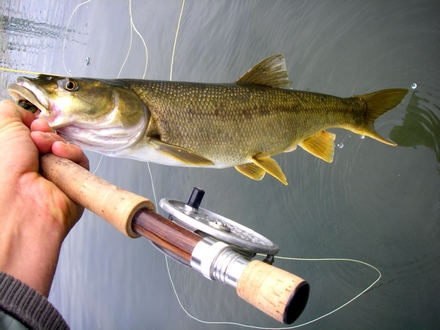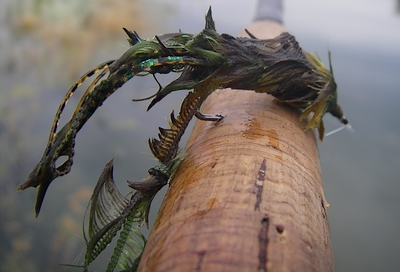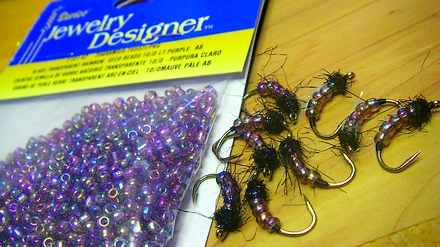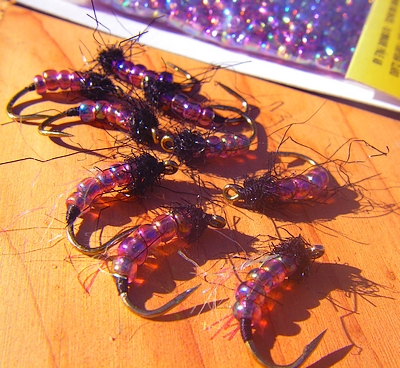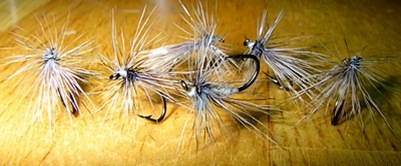It’s a systematic exploitation of every living thing in the watershed, and in pursuit of large fish – it’s best to leave no stone unturned.
I’m on the second “alpha” prototype – struggling with how to make the head wider without altering the physics or causing some instability in construction. “Wider” has always been the nemesis of fly tying as hook shanks are narrow and bodies have to be bulked up using benign materials; you can’t use bulky materials that float if you’re designing a sinking fly, and vice versa.
They’re constantly underfoot so I’ll assume they’re eaten with the same enthusiasm shown by Herons and Egrets. The ATV crowd mashes a million of them at every river crossing – guts, fins, eyeballs, and stunned tadpoles tumble down into the deep water routinely.
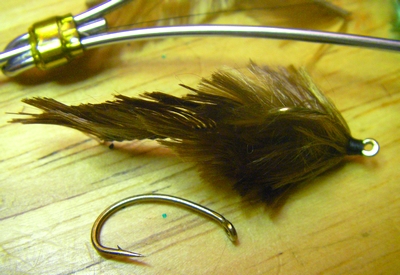
I’m fiddling with the details of retrieve, silhouette and weight. I’d describe the naturals as a muted brown streak that instantly buries itself when its flight is complete. I pile on the lead, fling it at the far bank, count two – then give it a yard long pull.
One large bass pulled the line out of my hands on the take – so he thought it looked good. A half dozen smaller bass ate it so there was some small consensus. Pikeminnow haven’t touched it yet, but with only a couple outings that’s not proof of much.
Tied on the above kirbed Togen Scud hook, and weighted to ride upside down; shank filled with 2 Amp fuse wire, broadened with chenille tied in on the sides, and cover the result with “Sable” boa yarn (mixed brown and gold).
Rain is in the forecast which will cut into the ATV hatch, I may sneak out between showers this weekend for more conclusive testing.

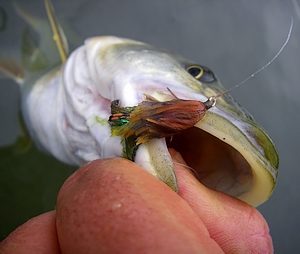 I hit a half dozen nice fish on the Olive and Orange mixture, implying the color is acceptable.
I hit a half dozen nice fish on the Olive and Orange mixture, implying the color is acceptable.